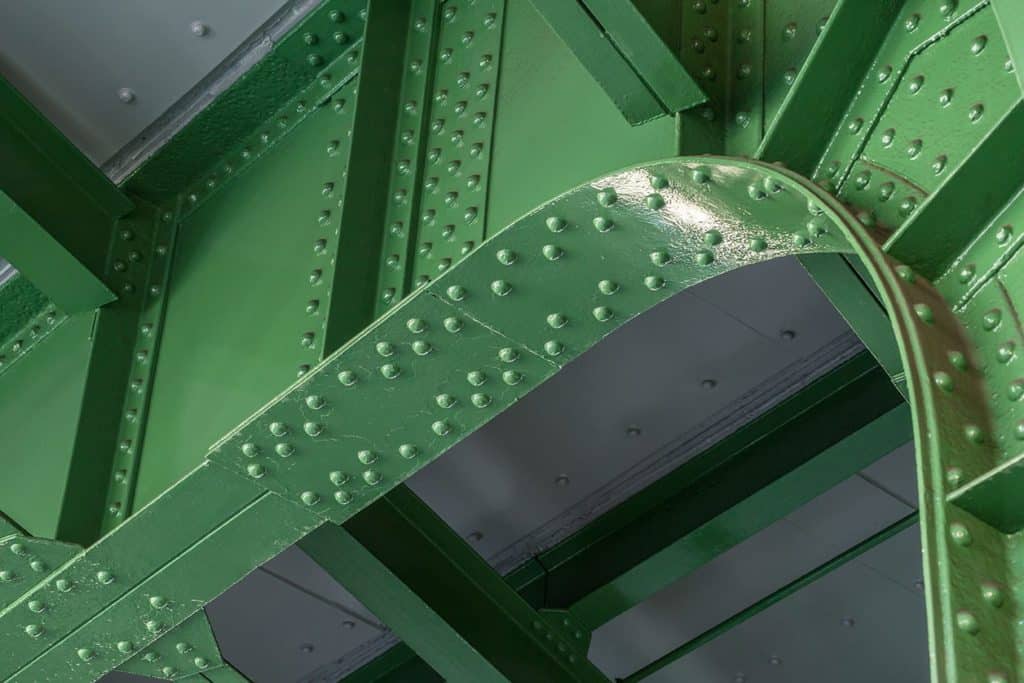By Clifford K. Schoff, Schoff Associates
Maintenance coatings are designed to minimize maintenance of metal structures by providing corrosion protection and adequate appearance over a long time. They have a variety of names: HDM (heavy duty maintenance), chemical coatings, protective coatings. They lack the glamour of automotive or architectural coatings, but they provide critical protection for chemical plants, oil tanks, oil field equipment, drilling platforms, pipes, bridges, etc. Long life is required. I recall an article where a state highway superintendent, when asked how often he repainted bridges after they were built, said “never!” Never does not seem possible, but 20–30 years with only spot repairs might be expected. Such durability depends on having excellent weathering resistance as well as corrosion resistance even when the coating is damaged.
Performance depends on many factors: surface preparation, application method and its quality, coating chemistry, film thickness, whether multiple coats or different types of coating layers are used, and the service environment. These are covered in a practical guide, “Expected Service Life and Coat Considerations for Maintenance and New Construction Protective Coatings Work” (CORROSION 2016 paper no. 7422). For a more detailed description of the guide, see Materials Performance (materialsperformance.com/coating-lining/2017/07/guide-helps-estimate-cost-and-service-life-for-protective-coatings).
Corrosion resistance depends on the above factors and on the amount and type of corrosion inhibitor used. Although such additives are most likely to be found in primers, I have seen cases where three layers were applied (primer, midcoat, and topcoat) and each one contained a corrosion inhibitor. Traditional inhibitors have been metallic zinc and chromate oxidizing agents (particularly hexavalent chromium). Some color pigments have doubled as inhibitors. Examples include red lead, chrome yellow (lead chromate), and moly orange. Unfortunately, these and hexavalent chromium and other oxidizing salts such as nitrates are no longer acceptable due to toxicity and/or carcinogenicity. Therefore, there has been much interest in finding or synthesizing replacements. Non-oxidizing salts such as phosphates, borates, benzoates, and oxalates have been used, but usually are not as effective as chromates.
There are inhibitors that act on cathodic sites and produce insoluble precipitates that form films that restrict reactions occurring there. Cathodic inhibitors tend to be metal salts (of Ca, Zn, Mg, and Ni) that interact with the hydroxyls produced at cathodes and deposit insoluble hydroxides at those sites. Organic inhibitors tend to adsorb on metal surfaces and form films. Effective ones have a high affinity for metal surfaces and keep water and electrolyte away from the substrate. Organic inhibitors that have shown promise for protecting steel include benzoxazoles, benzothiozoles, imidazoles, imidazolines, tetraphosphonic acid (TPA), TPA-amine complexes, and TPA-carboxylates.
Over their long lives, maintenance coatings may experience damage due to mechanical or chemical stress. It is critical for corrosion protection to continue in the damaged area. Damage-responsive coatings do this by releasing material that migrates to the site and passivates exposed metal or reacts to heal the damaged area before corrosion occurs. Chromates and zinc metal provide classic examples of damage responses as well as being effective in non-damaged areas. Both interact with damaged sites and release inhibitive material. A newer technology is to encapsulate a liquid or water-soluble inhibitor that releases when damage occurs or undergoes slow release under wet conditions or both. Adsorption of such inhibitors onto particles also can work. There are excellent organic inhibitors that when used in coatings tend to blister in QUV because their water solubility is too high (some solubility is necessary for inhibition). Adsorption onto silica, for example, allows coatings with good corrosion resistance without blistering.
Maintenance coatings need excellent adhesion, especially wet adhesion, to guarantee corrosion resistance and prevention of delamination when corrosion does occur. However, adhesion may be needed for other reasons. Years ago, I encountered an unusual adhesion problem with a smoke-stack coating. We thought that we had sufficient heat resistance, but did not bargain for the extreme over-curing and embrittlement of the coating by the hot stack and the powerful vibration (like hammer blows) as hot gasses were blown out of the stack. The coating jumped off in sheets! Greater flexibility and better adhesion under overbake conditions were needed.
